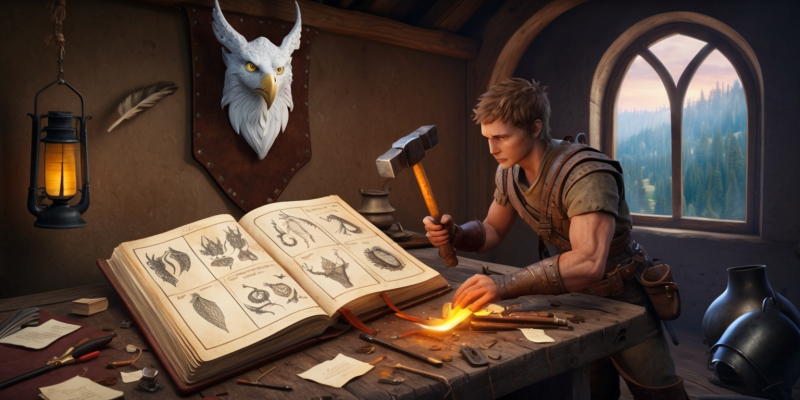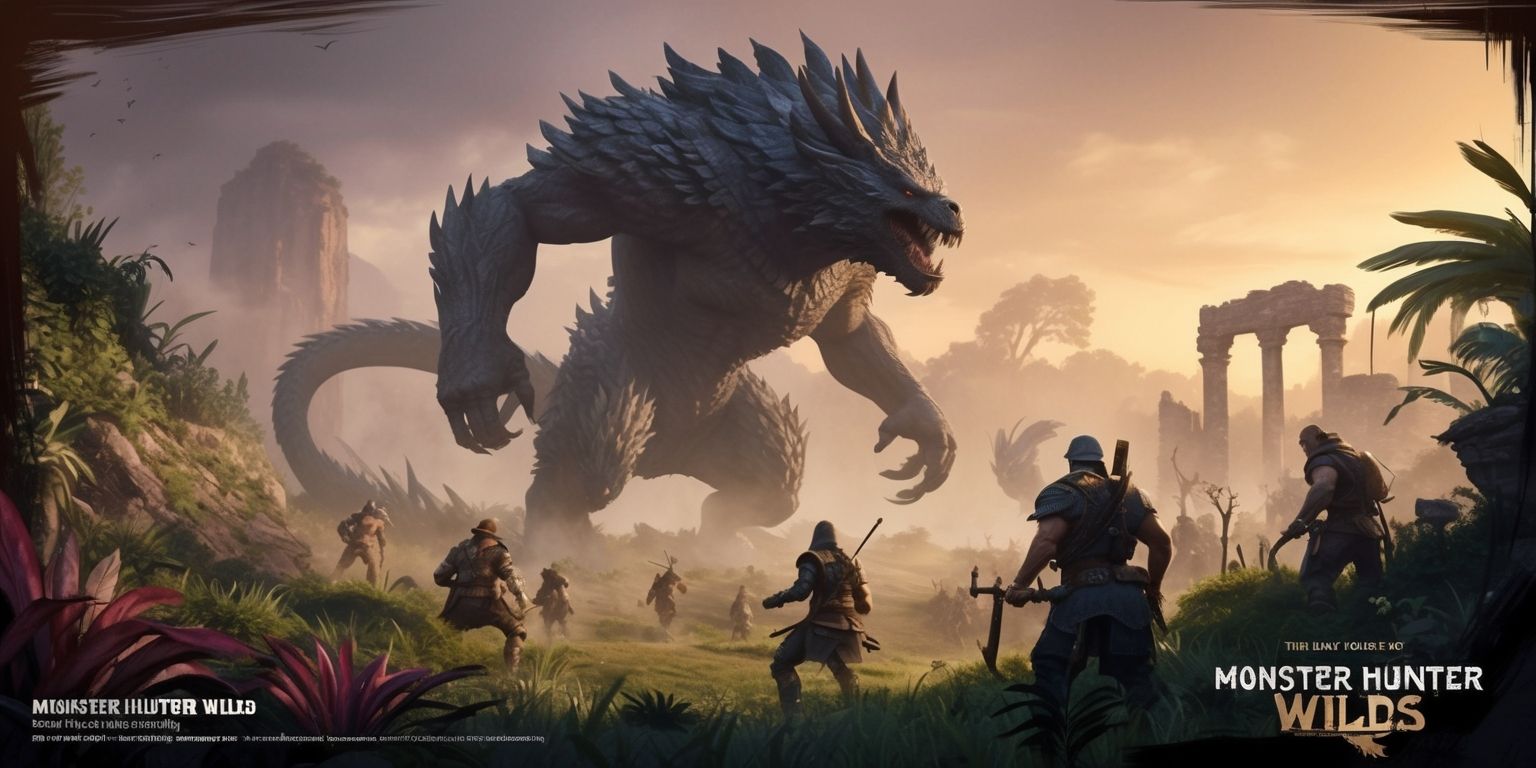Forging the Future: Mastering the Armor Upgrade System in Monster Hunter Wilds
2025-05-03

Deep within the expansive universe of Monster Hunter Wilds, the… complex art of enhancing your defensive gear is intertwined with progressing through the game’s narrative and unlocking new features. From humble beginnings in the early chapters, players gradually gain access to sophisticated customization options available at the Smithy. This evolution not only ensures that your character is better equipped to face formidable opponents but also enriches the sense of accomplishment that comes with overcoming challenges. The journey to mastering armor upgrades involves exploring hidden mechanics, interacting with key characters, and understanding the resourceful utilization of unique items that contribute to forging powerful armor. The following exploration provides detailed insight into various aspects of the upgrade system and the underlying gameplay mechanics.
Initiating Your Journey Through Progression
The initial steps in Monster Hunter Wilds set the stage for what becomes an intricate relationship between gameplay progression and functionality. Before the opportunity to upgrade armor is made available, the storyline guides the player through several early quests. This period is critical in acquainting players with the world’s dynamics and combat challenges. Notably, as you progress to Chapter 3, the door to armor upgrades opens, marking a turning point in your defensive preparations. Early hunts, especially those involving formidable Large Monsters, test your mettle and strategic planning. The narrative focus before this milestone emphasizes exploration and mastering the fundamentals of combat, which Subsequently, it nurtures a more comprehensive admiration for the subsequent advanced features. By engaging in these quests, you heighten both your skills and your narrative immersion, cementing the link between story progression and gameplay enhancement.
Navigating the Smithy and Interactive Tutorials
After unlocking crucial story chapters, your pathway leads to the heart of gear enhancement, the Smithy. At this pivotal location, Gemma becomes a central figure who guides you through the complex process of upgrading armor. Interaction with this key NPC is not only essential for tutorial purposes but also serves as a gateway for understanding the broader implications of gear customization. The system is designed in a way that emphasizes interactive learning, where players gain real-time hints during cutscenes and supplementary tasks such as the 'Toward Fervent Fields' quest. This interactive design ingrains the mechanics of selecting armor pieces, choosing upgrade paths, and investing resources judiciously. The experience at the Smithy transforms what could be a technical grind into an engaging mini-adventure within the game, combining narrative depth with hands-on functional progression.
Exploring the Mechanics of Armor Enhancement
The mechanics that underpin armor upgrades in Monster Hunter Wilds are both robust and finely tuned to ensure each decision holds weight. Once unlocked, the process involves a careful balance between resource management and strategic enhancement. By speaking with Gemma at any Smithy, players gain access to the 'Forge/Upgrade Armor' interface, where they can select any armor piece previously crafted. The upgrade process is mediated through the use of specialized items known as Armor Spheres. Each sphere carries a point value, and the enhancement level of your armor depends on accumulating sufficient points. With variations in armor rarity demanding different totals, players are encouraged to make thoughtful selections about where and when to invest these resources. The deliberate scaling of difficulty and reward creates a system where long-term planning is as important as moment-to-moment combat efficiency.
Incorporating Story-driven Unlocks

Unlocked by progressing through the core storyline, the armor upgrade feature signifies the bond between narrative development and gameplay evolution. Completing the 'Toward Fervent Fields' quest, a turning point in Chapter 2, serves as the key for this feature. Players must hunt the Rompopolo and advance through associated cutscenes to see the full benefits of this unlocking mechanism. This narrative strategy is carefully designed to ensure that arms enhancement is not available from the onset, thus preserving the initial challenges that come with early encounters. By pacing the introduction of such features, the game effectively scales its difficulty and keeps players engaged with each unfolding layer. The mission-based unlocking of upgrades fosters a feeling of reward that transcends mere in-game statistics, imbuing each progression phase with narrative significance.
Deliberate Craftsmanship and Functional Utility
The process of upgrading armor magnifies how deeply craftsmanship is woven into the game’s fabric. At every Smithy, the act of selecting and upgrading armor conveys a sense of personal achievement and customization. The system allows for modifications that not only improve the statistical profile of the armor but also reflect the player’s journey. As you advance, choosing the right combination of Armor Spheres becomes a strategic decision that can influence overall defense and versatility. Understanding the underlying value of each Sphere type and its associated points is essential. This deliberate and nuanced approach encourages players to think critically about improving their gear in response to various combat scenarios. The equilibrium between effort and reward is maintained through detailed upgrade menus that respect the player’s influence in crafting a unique gaming experience.
Delving into the World of Armor Spheres
Armor Spheres are at the heart of the enhancement system in Monster Hunter Wilds. To achieve the optimal upgrades, players must collect these specialized items, each carrying a designated point value. The spheres are crafted to reflect the rarity and strength of the armor; rarer pieces demand a more significant investment of points from higher-quality Spheres. Navigating this system involves understanding the different types available and their unique contributions during the upgrade process. The complexity here lies in balancing your available resources across multiple armor pieces, ensuring that each upgrade translates into tangible defensive benefits. This aspect of the game transforms the seemingly simple act of accumulating items into an elaborate strategy session, reaffirming the importance of resource management combined with tactical foresight. The journey to mastering this economy is both challenging and rewarding, adding depth to the overall gameplay experience.
Addressing Early Challenges in Combat
Before the armor upgrade capability is unlocked, players are likely to find themselves grappling with early challenges during hunts against formidable monsters. The limitations on gear customization earlier in the game test both the tactical acumen and the patience of players. Large Monster encounters, such as those involving Uth Duna, come with heightened difficulty that forces players to rely on innate combat skills without the cushion of improved armor. This design choice reinforces a natural progression system where the complexity of battle encourages focusing on honing core abilities before leveraging upgrades. The early game thus sets a baseline challenge that makes the later acquisition of the upgrade feature more satisfying. The deliberate challenge gap heightens anticipation for the time when armor upgrades become available, ensuring that each enhancement is well earned and thoughtfully integrated into the combat experience.
Interactive Decision-making and Resource Allocation
Once players reach the stage where they can upgrade their armor, the interaction with the feature becomes a core aspect of resource management. The decision-making process extends beyond simply choosing which piece of armor to enhance; it involves a more strategic evaluation of which resources to apply at any given moment in play. Each Armor Sphere type offers a different point value, making it crucial to understand how these values correlate with the armor piece's upgrade potential. This system encourages thoughtful participation, where each sphere is allocated to maximize defensive attributes without overspending resources that might be needed later. The gameplay thus shifts from direct combat to a more cerebral strategy stage, where players operate within the parameters of supply and demand, ensuring that every upgrade decision contributes to a long-term plan for enduring the game’s progressively challenging encounters.
The Role of NPC Guidance and In-game Tutorials
Gemma, located at the various Smithy facilities, plays a pivotal role in instructing players on the intricacies of armor upgrades. Her guidance transforms what might seem like a complex system into an accessible series of steps that even newer players can comprehend. This hands-on tutorial approach, embedded within the natural progression of the storyline, builds confidence and clear understanding of the underlying mechanics. Her explanations cover the fundamental aspects of choosing Armor Spheres and navigating the 'Forge/Upgrade Armor' interface. This in-game mentorship not only demystifies the process but also lends an immersive quality to the experience, bridging the gap between mere functionality and narrative immersion. The inclusion of such interactive tutorials reinforces player engagement and ensures that the transition from early difficulty to enhanced stability is seamless and enjoyable.
Nuances in Upgrading Different Armor Pieces
The variety in armor pieces available for upgrades in Monster Hunter Wilds introduces another layer of tactical depth. Each armor piece, depending on its rarity and design, requires a unique quantity of points accumulated from Armor Spheres to achieve the next level of enhancement. This diversity means that tailoring your defensive setup becomes a matter of both strategy and individual play style. Players must analyze the point requirements and understand the inherent benefits of each piece, from increased defense to other combat-enhancing bonuses. The decision to upgrade a specific piece is influenced not only by its current state but also by the potential it holds for future battles. This allocation of resources prompts players to forecast their upcoming encounters and choose upgrades that best complement their overall game plan. Such complexity in customization further heightens the immersion and rewards thoughtful strategic planning.
Balancing Crafting Expertise and In-game Economics
The upgrade system in Monster Hunter Wilds beautifully intertwines the art of crafting with in-game economics. Players must continually contend with the challenge of resource acquisition as they collect Armor Spheres through various means, such as monster encounters and completing quests. Balancing this economic aspect with the desire to upgrade armor adds a critical strategic element to the gameplay. The decision-making process here is not merely one of spending resources but also involves planning for future needs based on the expected progression challenges. Every upgrade reflects a careful analysis of risk and reward, where players measure the immediate benefits against long-term strategic goals. This delicate balance between resource management and quality enhancement underscores the depth of the game’s mechanics, urging players to immerse themselves fully in the economic underpinnings of their chosen path to progression.






